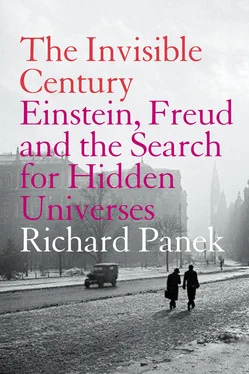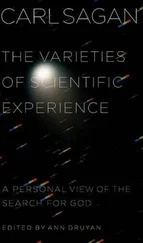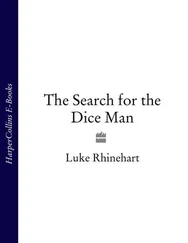Of course, such an effect wouldn’t become noticeable unless the ship were moving at a significant fraction of the speed of light. At more modest speeds, the Galilean interpretation holds to a high degree of accuracy; as Einstein later wrote, “it supplies us with the actual motion of the heavenly bodies with a delicacy of detail little short of wonderful.” Still, according to Einstein’s math, as long as a ship is in motion at all , the distance the light travels on its angular path would have to be greater than the simple perpendicular drop you would see when the ship is at rest relative to you, and therefore the time to cover that distance would have to be greater, too. Through similar reasoning, Einstein also established that for an observer in a relative state of rest, back on the dock, the measurement of the length of a rod aboard a moving ship would have to shorten in the direction of motion, and to grow shorter the faster the ship is moving relative to the dock. And vice versa: Someone on the supposedly moving ship would have every right to consider that system to be the one at rest, and you and your so-called resting system to be the one whose dimensions would also appear to have shortened, and whose time would also appear to have slowed.
So which observer would be “right”? The observer on the ship, or you on the dock? The answer: Both—or, maybe more accurately, either, depending on who’s doing the measuring. But how much time passed really ? How long is the rod really ? The answer: There is no “really”—no absolute space, no ether, against which to measure the motions of all matter in the universe. There is only the relative motions of the two systems.
“For the rest of my life I want to reflect on what light is,” Einstein once said. If Einstein were correct, the universe wasn’t quite a clockwork mechanism; it didn’t function only according to the visible motions of matter. Instead it was electromagnetic, operating according to heretofore hidden principles. On a fundamental level, it was less a pocket watch than a compass.
Not that this new understanding of the universe was complete. Einstein knew that all he’d done was take into account the measurements of objects moving at uniform, or nonvarying, velocities relative to one another—a highly specialized situation. He hadn’t yet taken into account the measurements of objects moving at nonuniform, or varying, velocities relative to one another—a far more representative sampling of the universe as we know it.
Still, it was a start. In a way, Einstein’s light-centered universe was as physically distinct from the Galilean one he’d inherited as Galileo’s sun-centered universe was from the Aristotelian one he’d inherited. But like Galileo, Einstein knew his had to be true—or truer than the one it was replacing, anyway—because he had seen the evidence for himself, if only in his mind’s eye.
Listen .
And so the boy listened. His father had something to tell him. Hand in hand, they were going for a walk during which, in the manner they’d recently adopted, the father would attempt to impart to his son some lesson about life. On this occasion, the story concerned an incident that had happened to the father years earlier, on the streets of the city of Freiberg, the boy’s birthplace. The father, then a young man, had been walking along minding his own business when a stranger came up to him and in one swift motion knocked his new fur hat off his head, called him a Jew, and told him to get off the pavement. The boy dutifully listened to his father describe this scene, and he had to wonder: So what did you do? His father answered quietly that he had simply stepped into the roadway and picked up his cap. The boy and his father then walked along in silence. The boy was considering this answer. He knew his father was trying to tell him something about how times had changed and how the treatment of Jews was better today. But that’s not what the boy was thinking. Some three decades later, when Sigmund Freud recalled this scene, he couldn’t remember whether he had been ten or twelve at the time, but the impression he’d taken away from that encounter he could still summon and summarize drily: “This struck me as unheroic conduct on the part of the big, strong man who was holding the little boy by the hand.”
An impression, anyway. By the time Freud was committing this memory to paper, he was beginning to understand that any interpretation of the encounter on that long-ago day depended as much on what the boy had wanted to hear as on what the man had been trying to say, or even on what he, by now a father several times over, wished to believe about his father or himself, or about fathers and sons—depended, that is, on the vagaries of the human thought process. Not necessarily because of that conversation with his father (though maybe so; who knows?), it was the human thought process at the most basic level that Freud had grown up to explore: the pathways of nerves along which thoughts travel as they make their way through the brain. And so successful at tracing those paths were the neuroanatomists of Freud’s generation that they seemed to have reached, as one contemporary historian of science declared, “the very threshold of mind.”
That threshold was the neuron. Freud himself sought it, and in the early 1880s, as a young neuroanatomist fresh out of medical school, he even delivered a lecture before the Vienna Psychiatric Society about his own research into the structure of the nervous system. Although his subject that day was not specifically the ultimate point of connection between the fibers from two separate nerve cells within the human brain, he allowed himself a moment’s speculation on what form such a juncture might take, though he immediately, and judiciously, added, “I know that the existing material is not sufficient for a decision on this important physiological problem.”
Over the following decade, Freud metamorphosed from complacent researcher, pursuing his intuitions in a hospital laboratory in Vienna, to insecure clinician, struggling to establish a private medical practice so he could support a family, to some uneasy and perhaps unwieldy hybrid of the two, splitting his time between the laboratory and the clinic—between the theory and the practice of medicine. Yet even in private practice Freud continued to monitor neuroanatomical research as it raced toward its seemingly inevitable conclusion. If each central nerve cell in the brain exists in isolation from every other central nerve cell, as researchers had determined within Freud’s lifetime, it must still establish a connection with other central nerve cells. So: Where was it? Find that specific point of connection, as the neuroanatomists of Freud’s generation understood, and you’ll have found, at long last, the final piece in the puzzle of man.
As recently as the first quarter of the nineteenth century, that puzzle had seemed potentially insoluble, in large part because of the limitations inherent in the only instrument that might conceivably assist such an investigation. Back in the 1670s, when Antonius von Leeuwenhoek and other natural philosophers began reporting what they could see by examining terrestrial objects through a microscope, this new method of investigation might have seemed to offer limitless possibilities for anatomists. That promise, however, pretty much vanished once they got a good look at the infinitesimal scale of what they’d be studying. Leeuwenhoek himself reported that the finest pieces of matter he could see in animal tissue were simply “globules,” and for well over a century anatomists were left to concoct hypotheses about what these globulous objects might be without being able to see them any better than Leeuwenhoek had. As late as 1821, the English surgeon Charles Bell—who himself had only just recently distinguished between those nerves that carry the sensory impulses, or sensations, to the brain and those that carry the motor impulses, or instructions on how the body should respond, from the brain—gave up on the brain itself: “The endless confusion of the subject induces the physician, instead of taking the nervous system as the secure ground of his practice, to dismiss it from his course of study, as a subject presenting too great irregularity for legitimate investigation or reliance.”
Читать дальше











